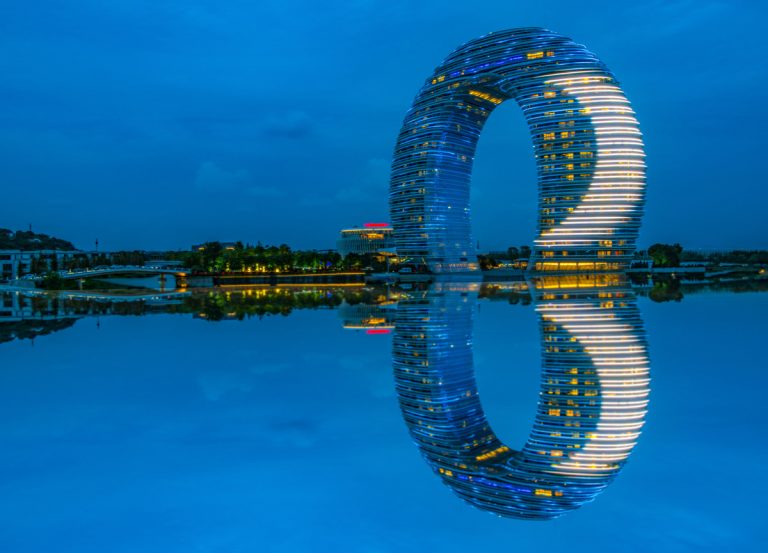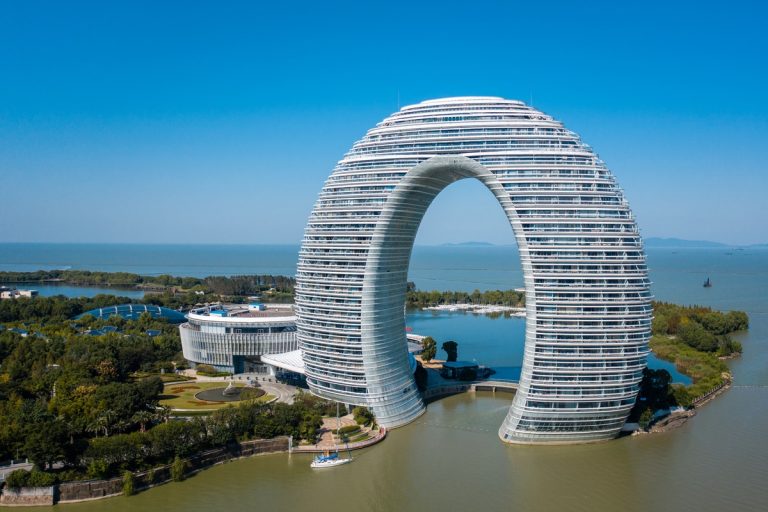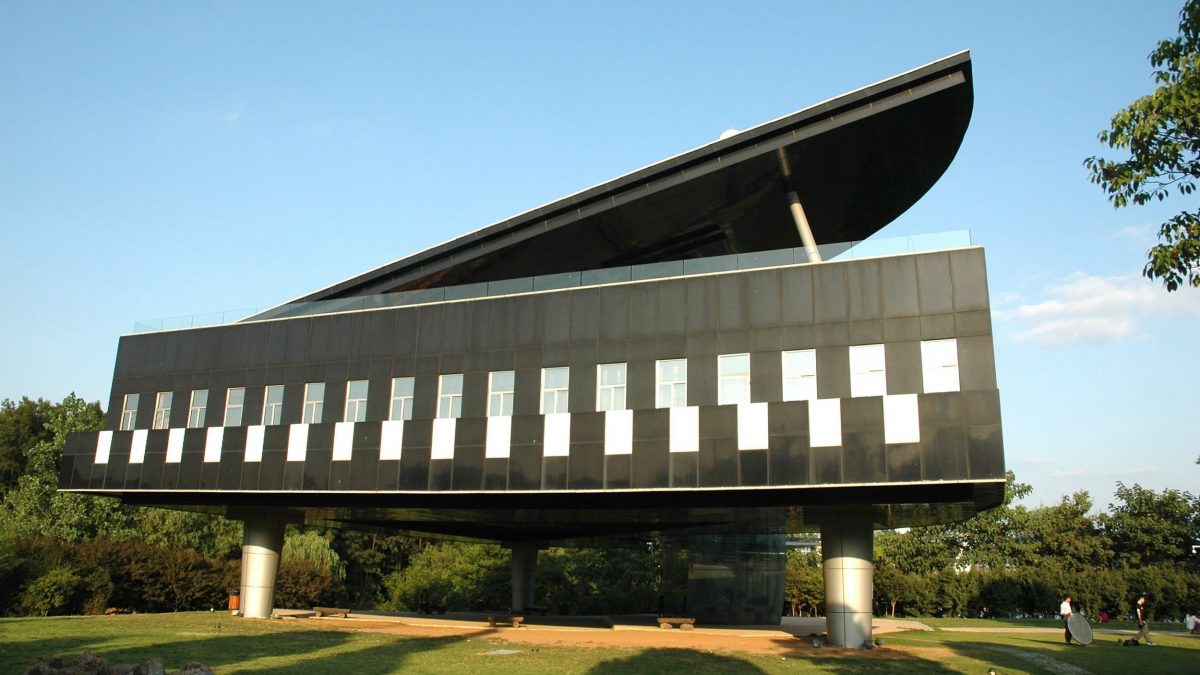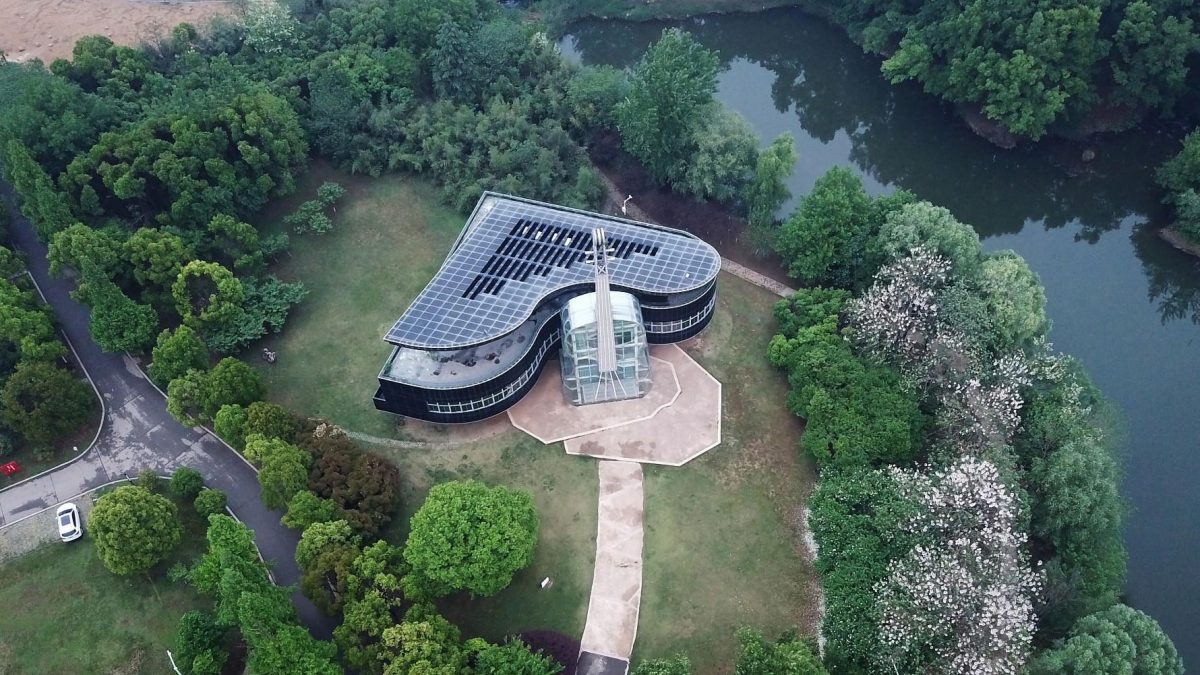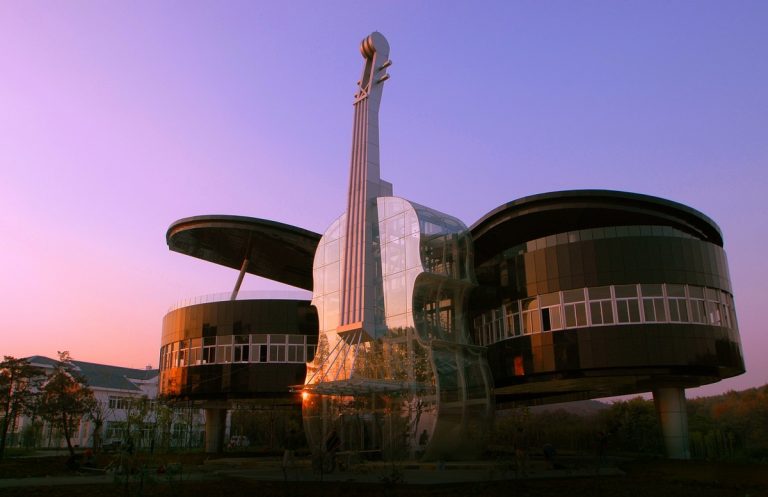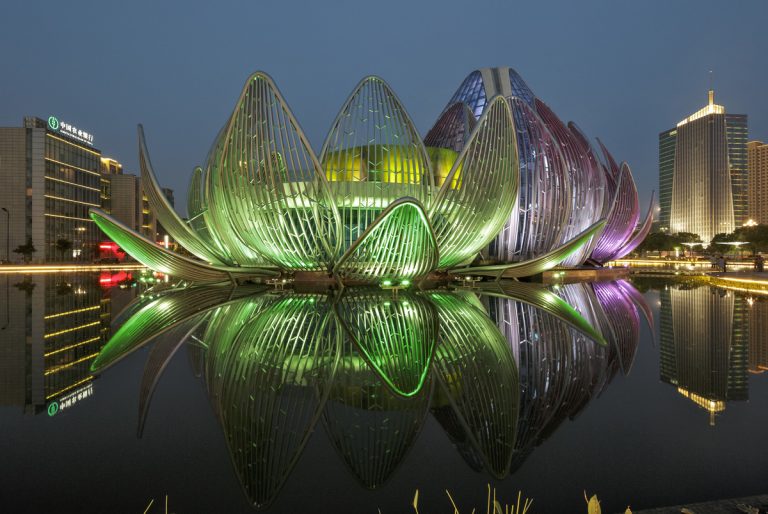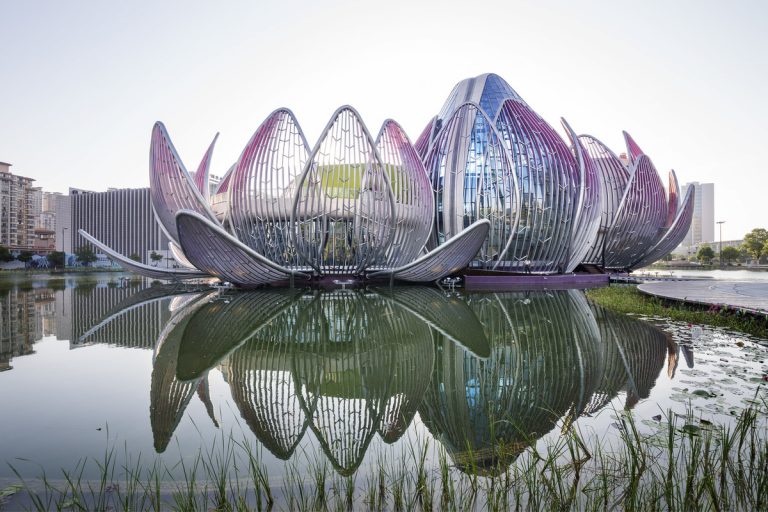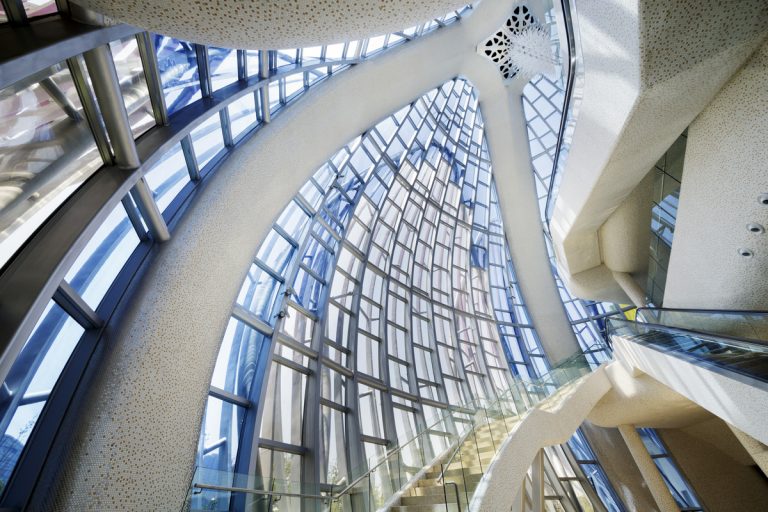Since the 2010s, China has snatched from the UAE the glory of the architectural laboratory of the world. It is possible that in the future some of these structures will become world attractions.
Sheraton Huzhou, Huzhou
The Sheraton Huzhou Hotel on the shores of Tai Lake has become a symbol of modern China. Built in the form of a “horseshoe of happiness”, the hotel is illuminated in such a way that at night it seems as if it is floating. The most interesting thing is that this building really has the shape of a ring, and several of its floors go under water. Needless to say, this particular Sheraton is one of the ten most expensive hotels in the world? It remains to add that when designing a giant 100-meter structure, the architects were inspired by traditional Chinese bridges depicted in old watercolors.
The Piano House, Huainan
This building in the form of a black piano and a transparent glass violin, built in Huainan (Anhui Province), has nothing to do with music. It’s just that the project, developed by students of the architecture department of the Hefei University of Technology, really liked the local authorities. The complex serves as an exhibition hall to showcase the plans of the municipal services of the new urban area of Shannan, and the violin is just the “shell” of the escalator. However, the piano house has gained worldwide fame and has become a landmark throughout China.
The Lotus Building, Changzhou
The Australian studio Studio505 designed and designed this lotus flower complex in the Chinese city of Changzhou. The impressive The Lotus Building, along with the surrounding People’s Park, is set to become a new cultural and, more broadly, community landmark that reflects the ambitions and future-oriented activities of local governments. Lotus, one of the main Buddhist symbols, for the Chinese is associated with the concepts of purity, peace, harmony, fertility and chastity. A whole city is hidden inside the flower.
Tianzi Garden Hotel, Langfang
This hotel in the Langfang city district has long become a legend. It is often called “Hotel of the Son of Heaven” or “Imperial Hotel”. Built in 2001, the hotel, 42 meters high, was immediately listed in the Guinness Book of Records as the largest building built in the form of sculpture. The ten-story house-sculpture depicts three Chinese gods of luck – Fu, Lu and Shou, reminiscent of porcelain figurines. God Fu, the central figure in red, symbolizes happiness and good luck, Lu, standing on the right in a green dress, is responsible for prosperity and wealth, the last, Shou, is the god of health and longevity.
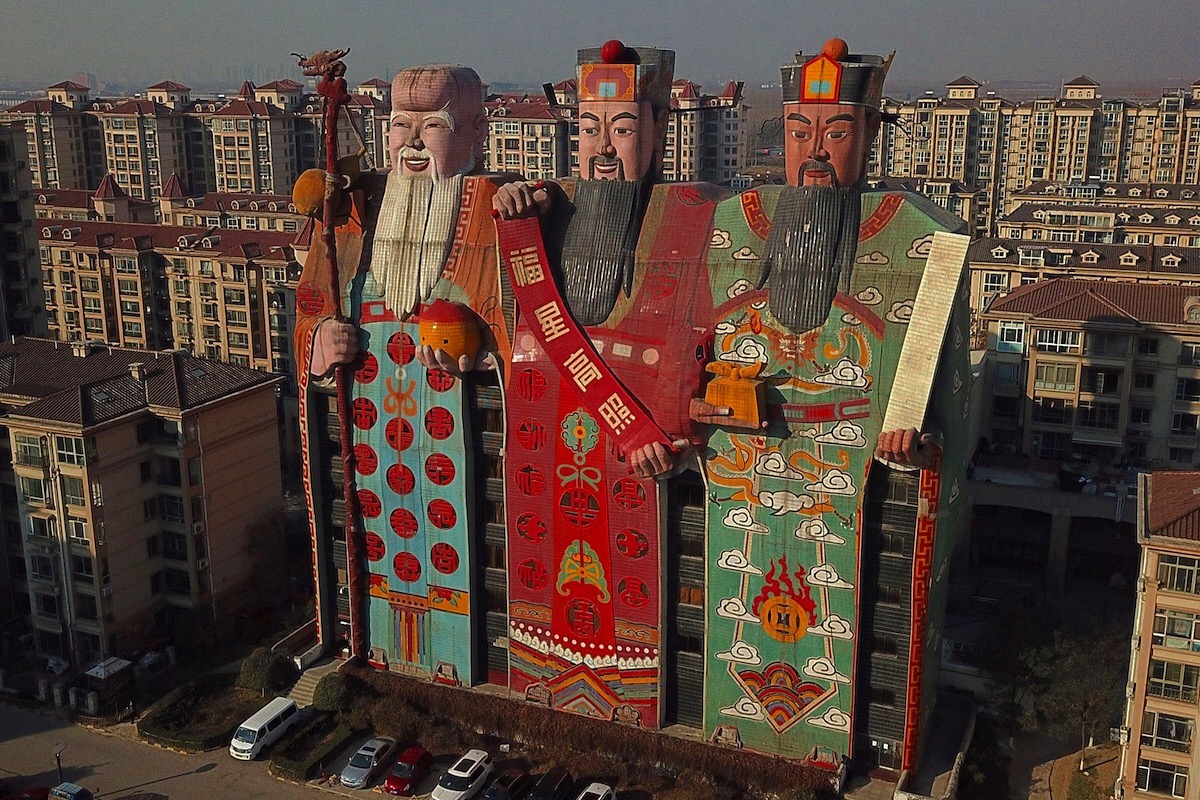
Photo: shutterstock.com; John Gollings; thevalemagazine.com; pinterest.co.uk; pholder.com; twitter.com
